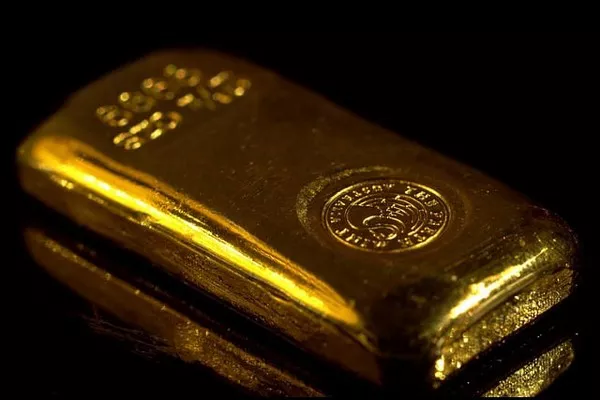Gold found renewed strength on Friday, benefiting from the U.S. dollar’s first weekly decline in two months. This bolstered the precious metal’s position above the $1,900 mark and secured a modest weekly gain.
The most-active gold futures contract on New York’s Comex, the December contract, settled at $1,946.20 per ounce, marking a $13.30 increase or 0.7% for the day. Over the course of the week, the benchmark gold futures contract saw an increase of $3.50, equivalent to 0.2%.
Simultaneously, the spot price of gold, which had briefly touched $1,930.90 per ounce earlier in the week, was trading at $1,924.22 by 13:55 ET (17:55 GMT). This left spot gold, influenced by real-time trades in physical bullion, with a 0.4% gain for the week.
Spot gold’s ability to maintain its foothold above $1,900 was closely scrutinized this week. This came in light of the U.S. Consumer Price Index’s headline reading, which surged beyond expectations for the second consecutive month. Such developments raised concerns about inflation and the possibility of an assertive stance by the Federal Reserve regarding interest rates.
Global Markets Adjust to New Rate Hike Expectations
The European Central Bank’s decision to raise rates to a record high of 4% while signaling that this increase would likely be its last has prompted global markets to recalibrate their expectations for interest rate hikes.
When the Federal Reserve convenes on September 20, policymakers are not expected to raise rates, especially after implementing 11 hikes, which collectively added 5.25 percentage points to a base rate of just 0.25% since February 2022. However, the spotlight will be on Chairman Jerome Powell’s remarks during his upcoming news conference, as they may provide insights into the Fed‘s outlook for the remainder of the year. This is particularly significant considering that two more policy meetings are scheduled for November and December.
With a Fed rate hike appearing to be temporarily off the table, dollar investors adopted a wait-and-see approach, while others seized the opportunity to profit from the greenback’s eight-week rally. Consequently, gold emerged as a preferred hedge.
Mixed Outlook for Interest Rates Creates Global Uncertainty
Ed Moya, an analyst at online trading platform OANDA, commented on the situation, stating, “Gold prices are surging as risk aversion percolates. A lot of pessimism is growing across Europe, triggering some safe-haven flows toward gold. The key for gold is for global bond yields to retreat, and that won’t happen until we get beyond next week’s central bank-a-palooza, which might show that the end of tightening is mostly here for the advanced world.”
The rise in U.S. consumer prices for the second consecutive month in August, resulting in a year-on-year growth rate of 3.7% compared to 3.2% in July, was primarily attributed to soaring gasoline prices, accounting for more than half of the increase. This development could reignite pressure on inflation hawks at the Federal Reserve.
The central bank’s target inflation rate remains capped at a maximum of 2% annually, and it has pledged to reach this target by implementing further rate hikes if deemed necessary.


